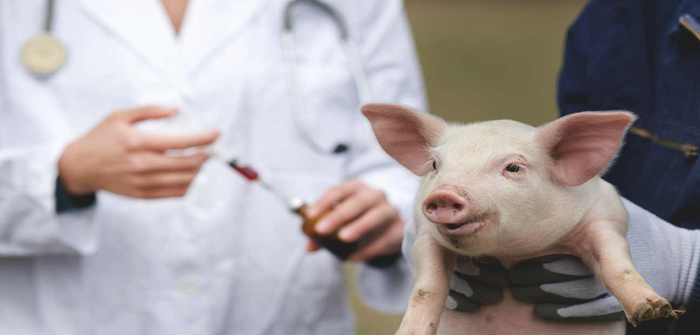Following the news that sales of antibiotics to treat and prevent disease in UK farm livestock have achieved a record low following a 27 per cent reduction over the past two years, targets for further reducing, refining or replacing antibiotic use across the key livestock sectors have been announced.
The sector-specific targets were developed over the past year by a ‘Targets Task Force’, facilitated by the Responsible Use of Medicines in Agriculture (RUMA) Alliance.
The Targets Task Force comprises a leading veterinary surgeon and farmer from each of the beef, dairy, egg, fish, gamebird, pig, poultry meat and sheep sectors, who have been consulting with key organisations in their respective industries. The group also includes observers from regulators Food Standards Agency and Veterinary Medicines Directorate (VMD).
While the targets each sector has set vary according to the availability of data and scope in their sector, the targets as a whole have been described as ‘positive and proactive’ by the VMD.
Furthermore, the regulator has welcomed the voluntary sharing of usage data by the different farm livestock sectors, saying it has been ‘sincerely impressed by the way different sectors have risen, or are rising to the challenge’.
The headline targets for the eight sectors include a reduction in use of antibiotics in pigs by over 60 per cent between 2015 and 2020, with minimal use of highest priority Critically Important Antibiotics (CIAs). Data released indicate a good start has been made, with usage in the pig sector falling by around 35 per cent between 2015 and 2016.
The dairy cattle sector has committed to a 20 per cent reduction by 2020, with a particular focus on halving use of the highest priority CIAs.
Three sectors – poultry meat, laying hen and fish – are either already low users of medicines or have made significant reductions over the past five years. These sectors will be focusing on maintaining use at the minimal level needed to ensure good health and welfare among their livestock, while tackling emerging challenges should they arise.
The poultry meat sector, previously described as a ‘pathfinder’ for the rest of the farming industry, has already reduced use by 71 per cent between 2012, when its stewardship scheme was introduced, and 2016.
The beef and sheep sectors are already low users of antibiotics, but have acknowledged they each need better data, and will also commit to addressing ‘hotspots’ of use. Both have committed to a 10 per cent reduction in antibiotic use by 2020, subject to securing better data.
For the beef sector, reduction in use centres around calves and youngstock, particularly in the areas of respiratory disease. There is also an emphasis on calves from dairy herds, where mixing animals from different sources can create a peak in disease pressure similar to children going to school for the first time.
Gwyn Jones, chair of both RUMA and the Targets Task Force, said he has been overwhelmed by the positivity of the group and its willingness to be ambitious.
“The members have worked very hard and have shown incredible leadership and persistence,” he said. “They have also provided unprecedented support and inspiration to each other.
“I am delighted they have agreed that the group should continue to meet twice-yearly to review progress and discuss issues.”


